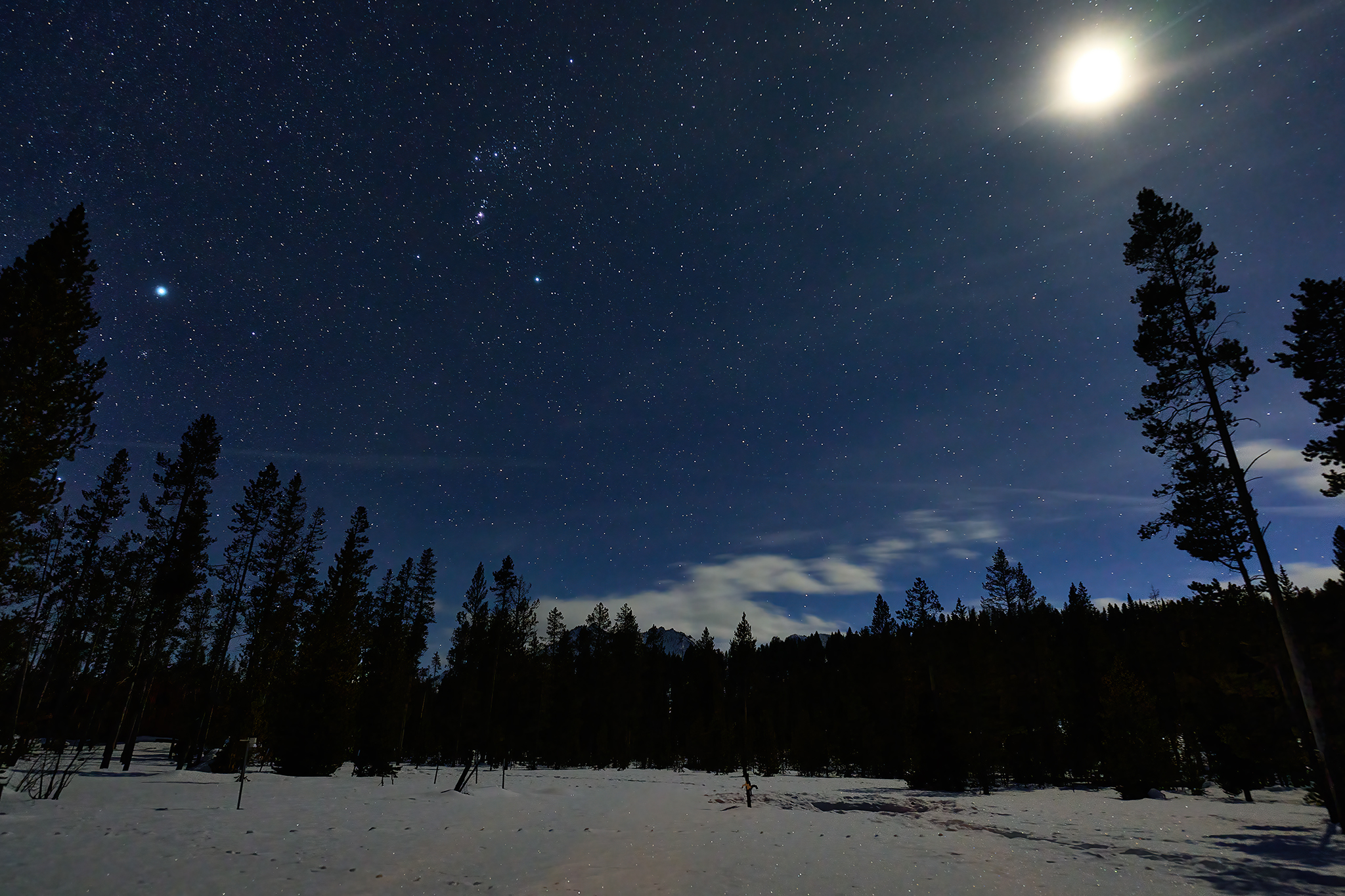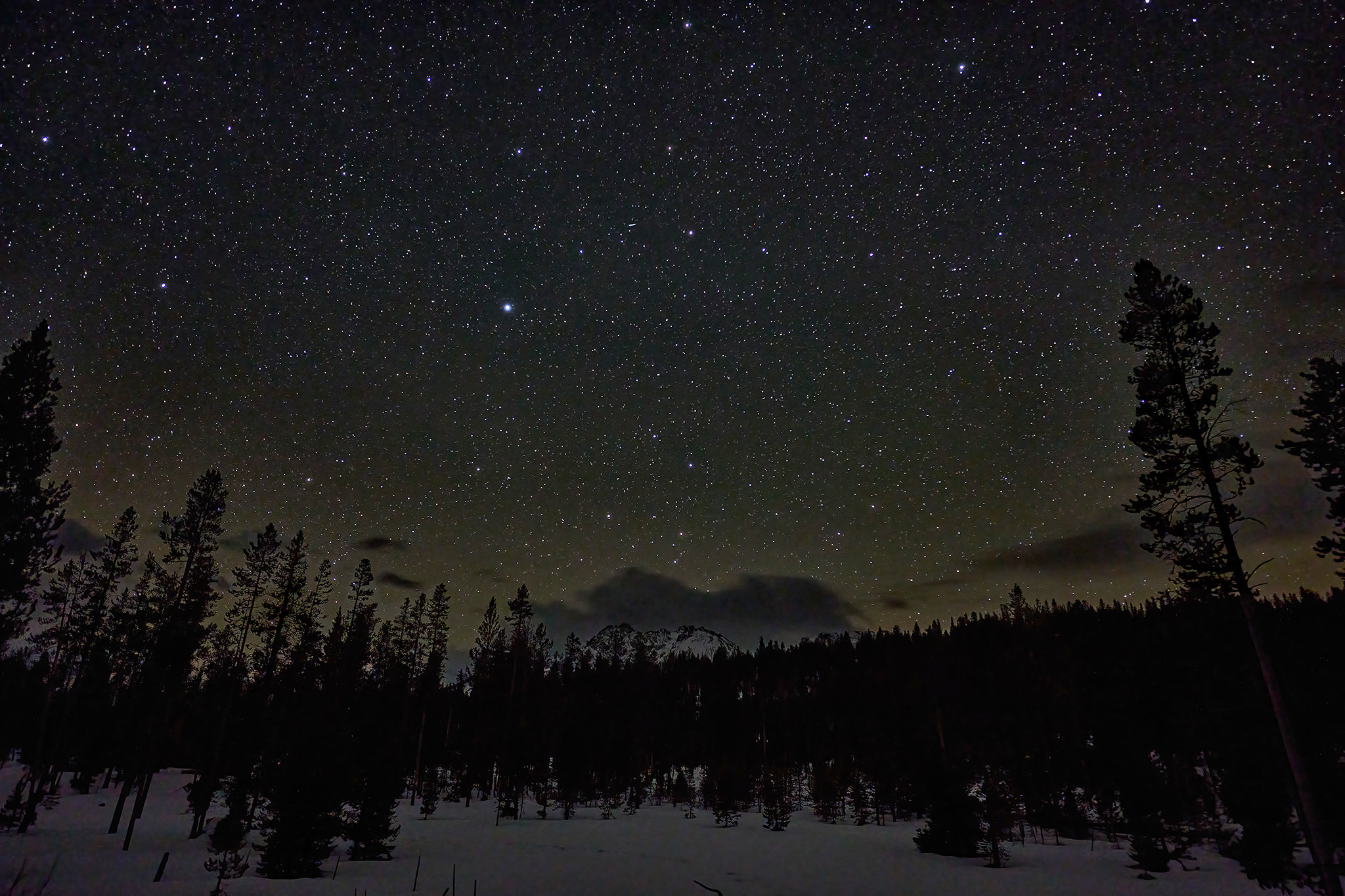The New Moon for March 2022 is long past. The first days for Dark Sky photography were solid, but clouds and warm moist weather eliminated shooting for a some key days. Such is Life. However, as I return to the Cabin from a dinner with friends in Stanley (Doug and Cathy Proctor), the stars are out – front and center.
I am situated in the Goat Creek drainage near Stanley, Idaho surrounded by the Sawtooth National Recreation Area. In my direct view is Williams Peak and Merritt Peak, with the Goat Creek Basin splitting the two peaks. The Moon is out and I would never expect the stars in the sky to be shining brightly. Well… Better to be Lucky than Good… I capture two images. One with the Moon present at about 8:52PM and another hours later at 3:30AM.

Sirius is Serious in Goat Creek.

Virgo and Leo Are in the House
— Jeff’s Worthless Trivia and Other Thoughts —
In the Sirius photo, the light from the Moon is blasting down from the right hand side of the sky. The Sky and the landscape around me are a dazzling blue. I feel as if I can reach-out and touch the stars, let alone see them. The large pulsating star near the big tree on the left is Sirius in the Canis Major constellation. Many know Sirius as the Dog Star. It is the brightest star in Earth’s night sky. In Greek, Sirius means glowing. Occupying the center of the image is the Orion Constellation. Orion is named for the hunter in Greek Mythology. Orion is known and seen world-wide as it is located at the celestial equator. Many Astrologers (of which I am not) believe two of the ten brightest stars in the sky are located in Orion — Rigel (Beta Orionis) and Betelgeuse (Alpha Orionis). Both are clearly visible in the image and are the brightest part of Orion on this night.
In the Virgo and Leo photo, the constellations Virgo and Leo are prominent in the center and right center of the image. Virgo is known in mythology and the Virgin and is tied to fertility. Virgo is full of exoplanets. It is the largest constellation of the Zodiac and the second-largest constellation overall, behind Hydra. Spica is the brightest star in Virgo (lower center in image). For context, Spica is 260 light-years from Earth. It is twice as large as our sun, and 2,300 times brighter. Leo (the Lion) was one of the very first identified and documented constellations – by the Mesopotamians. One of the brightest stars in Leo is towards the upper right side of the image. The star is named Al Geiba, which means “the lion’s mane.” In 2001, a planet eight times the size of Jupiter was discovered orbiting Al Geiba.
From a technical perspective… Camera: Nikon Z9, Lens: Nikon Z 20MM f 1.8 Both images were shot with 13 seconds of exposure at F2 and ISO 2000.
Nice!